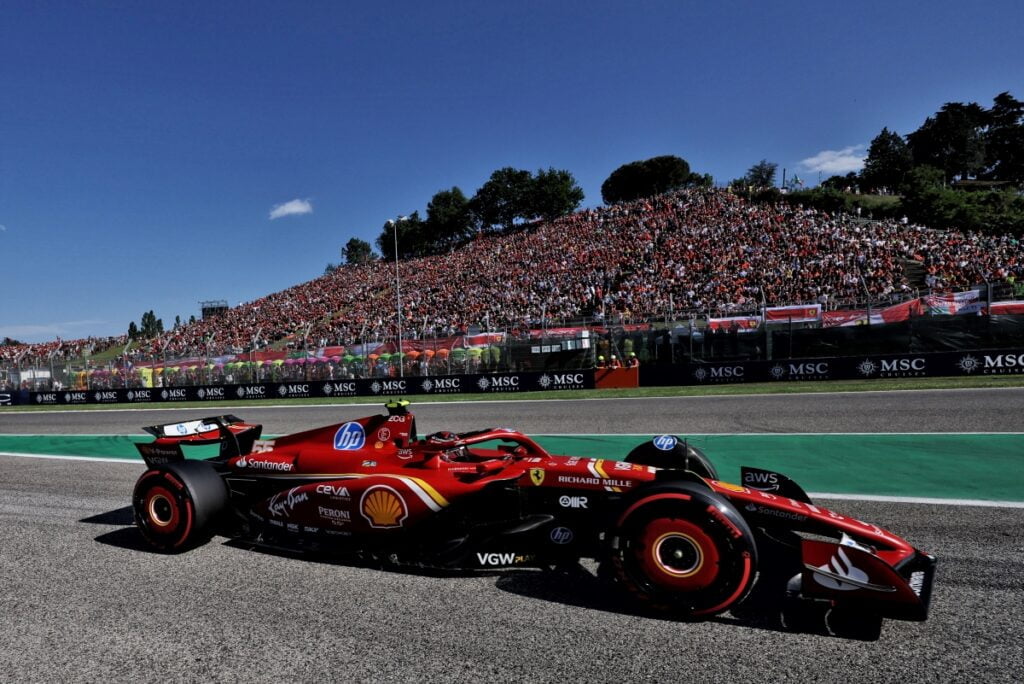Wind Woes: How a Gusty Imola Thwarted Ferrari's Pole Hopes

Formula 1's Emilia Romagna Grand Prix turned into a windy challenge for Ferrari as Carlos Sainz detailed how a change in the wind direction significantly impacted their prospects of securing pole position at Imola. Ferrari fans were hopeful as Charles Leclerc dominated the initial practice sessions, setting the stage for a potential pole. However, come qualifying, neither Sainz nor Leclerc could outpace Red Bull’s Max Verstappen or the surprisingly strong McLarens.
Despite Ferrari rolling out several updates to their SF-24 car, Leclerc was two-tenths slower than Verstappen, with Sainz trailing further by three-tenths. Analyzing the weekend's developments, Sainz remarked on Red Bull's understated struggles and expressed his surprise at not finding more pace on the Soft compound tires.
“No one runs the fuel and they run with the engine turned down on Fridays, especially Red Bull. When you look at the Soft laps and the GPS data, you have always seen the McLarens and Max since FP3 looking very strong,” Sainz explained. He pinpointed a 0.4-second deficit in the first sector as a mystery, especially when his performance on Medium and Hard tires seemed more competitive.
Unraveling the Wind Factor
Leclerc had previously warned Ferrari to anticipate and adapt to the evolving wind conditions to capitalize on their pace from practice sessions. While Ferrari's SF-24 car showed improvements, Sainz admitted the team hadn't completely ironed out all its vulnerabilities. He explained, “It is a balance shift and it’s also the way the wind was blowing today; it doesn’t really help our car. It’s a tailwind into Turn 2 and Turn 7, which is still our main weakness with this car.”
 Ferrari SF-24 at Imola" />
Ferrari SF-24 at Imola" />Sainz further elaborated on these troubles, noting that generating heat in the tires combined with the excessive tailwind led to a time loss in the crucial first sector. “The wind was blowing from behind and wind from the front into Turns 2, 5, and 7 is mega for our car, but today with a tailwind, we struggled with a particular thing in those conditions. And maybe not switching the tires perfectly on, plus the wind you lose 0.4 seconds,” Sainz clarified.
McLaren's Meteoric Rise
Adding to Ferrari's woes, Sainz acknowledged that McLaren's recent upgrades have vaulted them ahead in single-lap performance. McLaren's enhancements introduced in Miami have proven effective, giving them a distinct edge, especially on softer compounds. “They had it in Miami; it’s just on the Soft they struggled. If you saw the lap times they were doing on Mediums in Sprint quali and the race, they were 0.2s or 0.3s faster than us. We come to a McLaren circuit, which is Imola,” he noted.
With McLaren exploiting their strengths and Ferrari's strategy falling short in the qualifying duel, Sainz reiterated the challenge of racing at a track like Imola. “It was always going to be difficult to beat McLaren around here, they were a 0.1s off with Charles and 0.3s off with me, a struggling me,” he stated. Sainz remains optimistic and hopes upcoming circuits will favor Ferrari’s adaptability and resilience, allowing them to challenge McLaren and Red Bull more effectively.